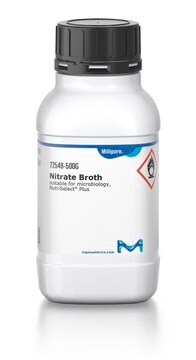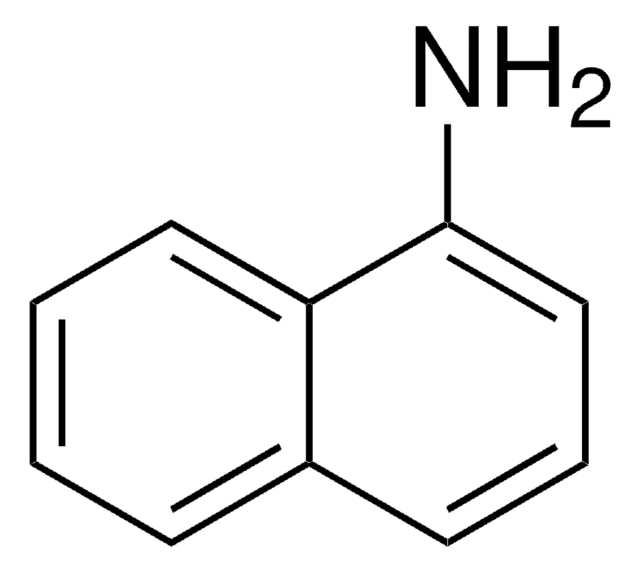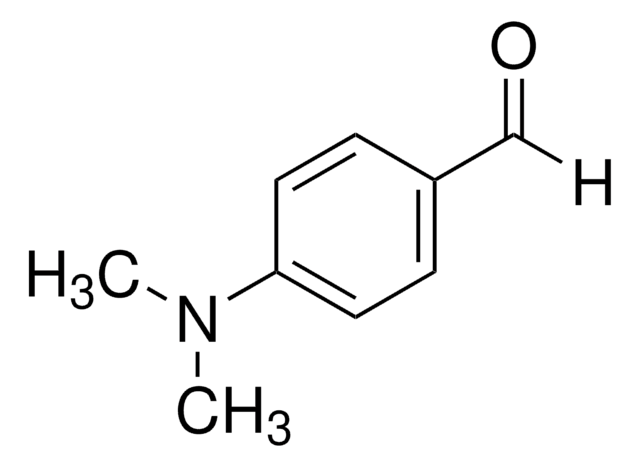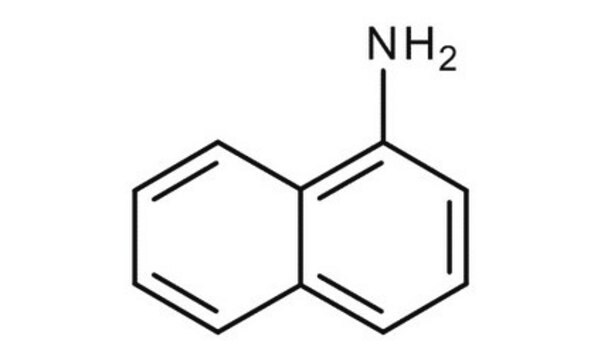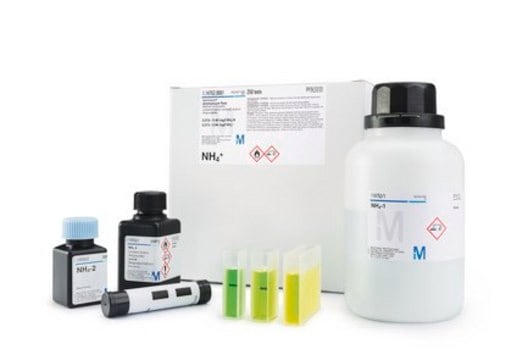38497
Nitrate Reagent A
suitable for microbiology
Sinônimo(s):
1-Naphthylamine solution
About This Item
Produtos recomendados
linha de produto
BioChemika
Nível de qualidade
prazo de validade
limited shelf life, expiry date on the label
composição
acetic acid 5 N, 1000 mL
α-naphthylamine, 5 g
técnica(s)
microbe id | metabolite detection: suitable
aplicação(ões)
agriculture
clinical testing
environmental
food and beverages
pharmaceutical
microbiology
adequação
Enterobacter spp.
Neisseria spp.
anaerobic bacteria
bacteria
InChI
1S/C10H9N/c11-10-7-3-5-8-4-1-2-6-9(8)10/h1-7H,11H2
chave InChI
RUFPHBVGCFYCNW-UHFFFAOYSA-N
Descrição geral
Não está encontrando o produto certo?
Experimente o nosso Ferramenta de seleção de produtos.
Palavra indicadora
Danger
Frases de perigo
Declarações de precaução
Classificações de perigo
Eye Dam. 1 - Skin Corr. 1B
Código de classe de armazenamento
8A - Combustible corrosive hazardous materials
Classe de risco de água (WGK)
WGK 1
Ponto de fulgor (°F)
Not applicable
Ponto de fulgor (°C)
Not applicable
Equipamento de proteção individual
Faceshields, Gloves, Goggles, type ABEK (EN14387) respirator filter
Escolha uma das versões mais recentes:
Já possui este produto?
Encontre a documentação dos produtos que você adquiriu recentemente na biblioteca de documentos.
Os clientes também visualizaram
Artigos
Vibrio Detection
On the Trail of Campylobacter
For microbiologists the most fundamental stain was developed in 1884 by the Danish bacteriologist Hans Christian Gram.
Sigma-Aldrich.com presents an article concerning Differentiation of Escherichia coli from coliforms.
Protocolos
US EPA Method 8270 (Appendix IX): GC Analysis of Semivolatiles on Equity®-5 (30 m x 0.25 mm I.D., 0.50 μm)
Nossa equipe de cientistas tem experiência em todas as áreas de pesquisa, incluindo Life Sciences, ciência de materiais, síntese química, cromatografia, química analítica e muitas outras.
Entre em contato com a assistência técnica

